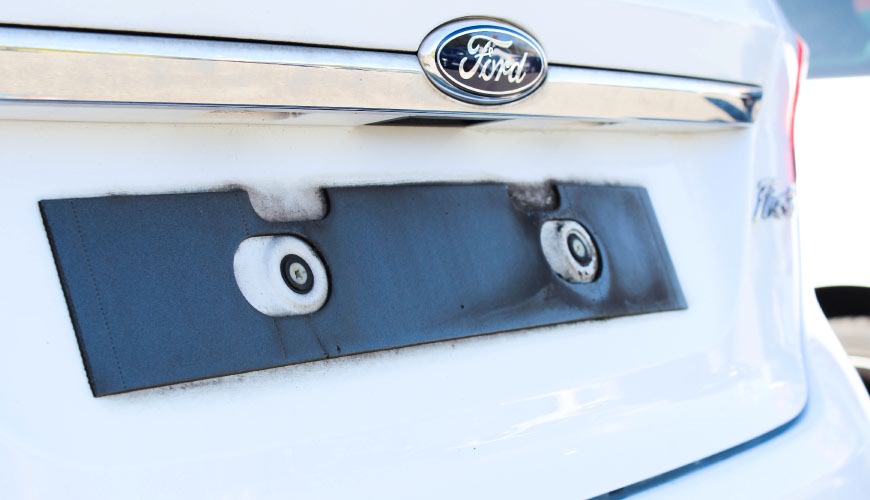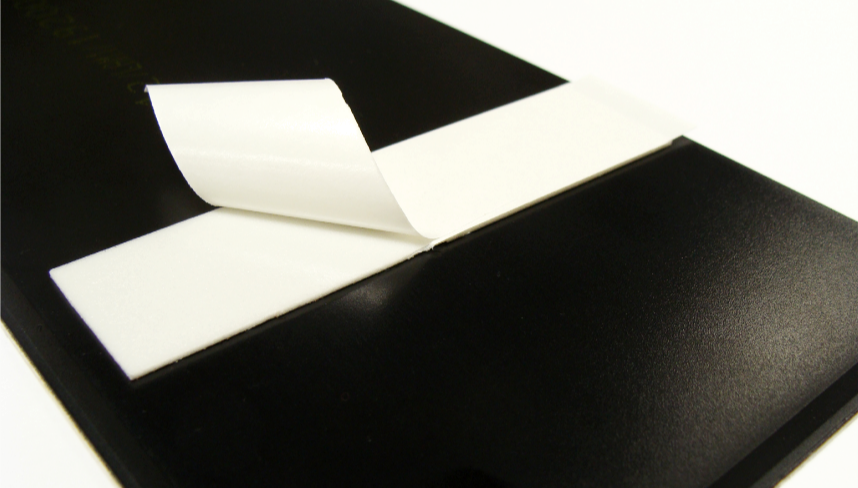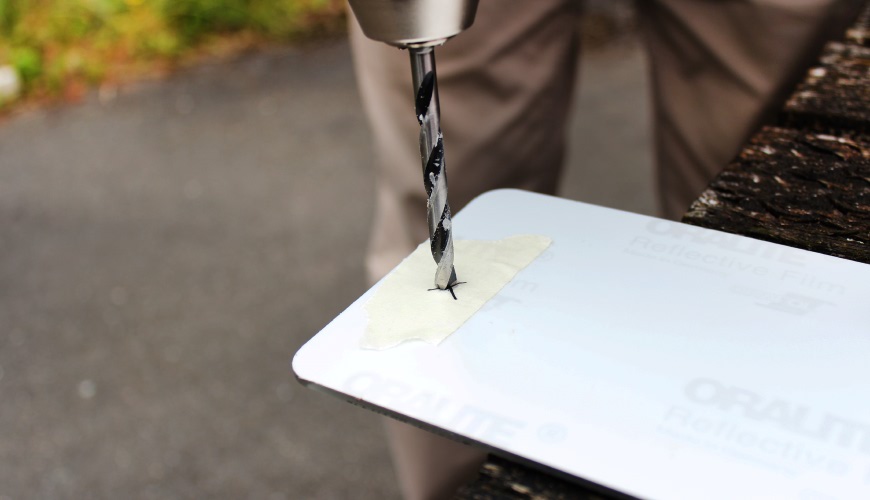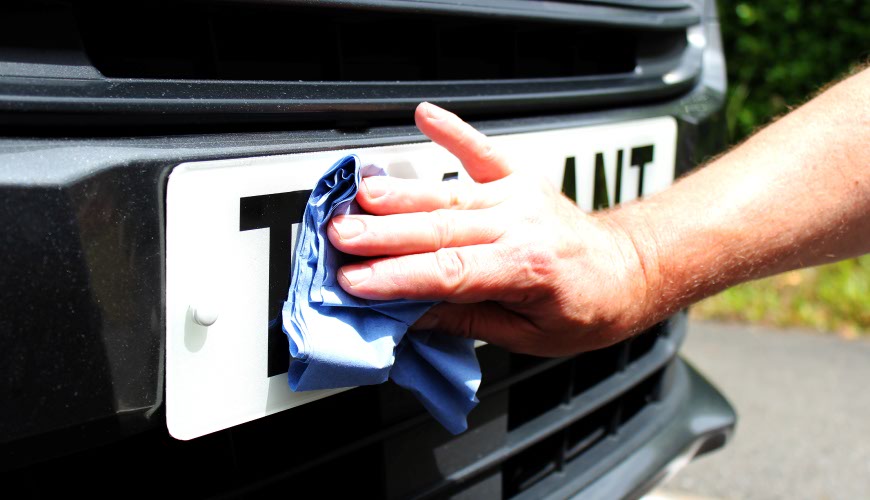This article offers a simple guide to Fitting Number Plates for retailers, suppliers and their customers. Follow this article and you’ll be able to fit a number plate that stays in place and is compliant with British Standards.
Remove Existing Number Plate
Before you can fit a new number plate, you will need to remove the existing one. If your old plate is screwed on, simply unscrew the holding screws and remove it. But if you have plates fitted with adhesive pads you’ll need to lever it off. To make this easier, we suggest using fishing line or string like dental floss. And cut through the pads holding your plates on, without damaging the bodywork.
Next you will need to clean off any dirt and grease, as well as the remaining pads. For this use a general detergent or household washing-up liquid. In fact WD40 is great for removing dirt & the adhesive pads. Just spray it on and leave it to soak in, then you can rub it away. Once it’s clean, dry off the whole area and finish off by wiping down with an Isopropyl Alcohol Pad to degrease.
Fitting New Number Plates
Adhesive pads are now the recommended method of fixing number plates under BSAU145e. If you need to use fixings, they must not be placed around the registration. Which makes the edges of the plate, the ideal position for fitting screws or bolts.
Using Adhesive Pads
Sticky pads are the easiest and fastest way to fit a new number plate. First you need to stick your adhesive pads to the rear of the plate. So peel away one side of the backing tape and space them equally across the area. Typically people use a pad on either end and couple or so in the middle.
When you’re ready to fit it to the vehicle, peel off the remaining backing tape. And line it up into position, remember your plates have to be straight for readability. Once you’re happy, push it firmly into place and hold it still for 10 seconds to bond.
Using Screws or Bolts
Before you can screw on your new number plate, it will first need drilling. Decide where you need to make holes, use your old number plate as a template if you can. We have a Number Plate Drilling guide which will help you avoid cracking your plates.
When you drill, use masking tape on your starting points and an acrylic bit. Allow the bit to do the work, avoid applying to much pressure or widening your holes. Deburr the holes to remove any excess, so your fixings fit snugly. Now it’s ready to be mounted into place, remember to fit caps for a clean finish and to avoid water ingress.
Clean and Wipe
Once your new number plates are fitted, clean and wipe them down. Remove any fingerprints and dirt from the front so it’s readable.





